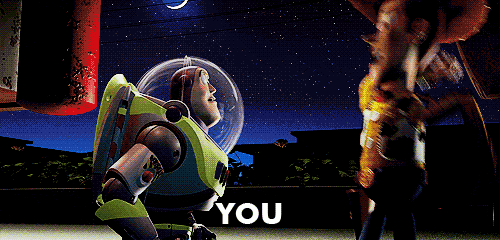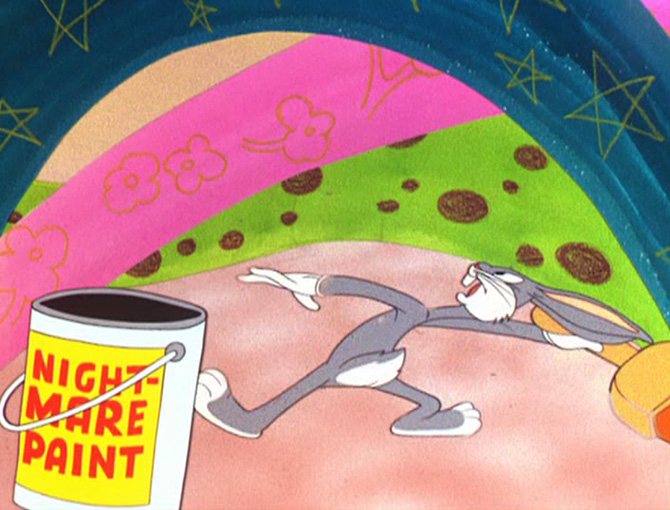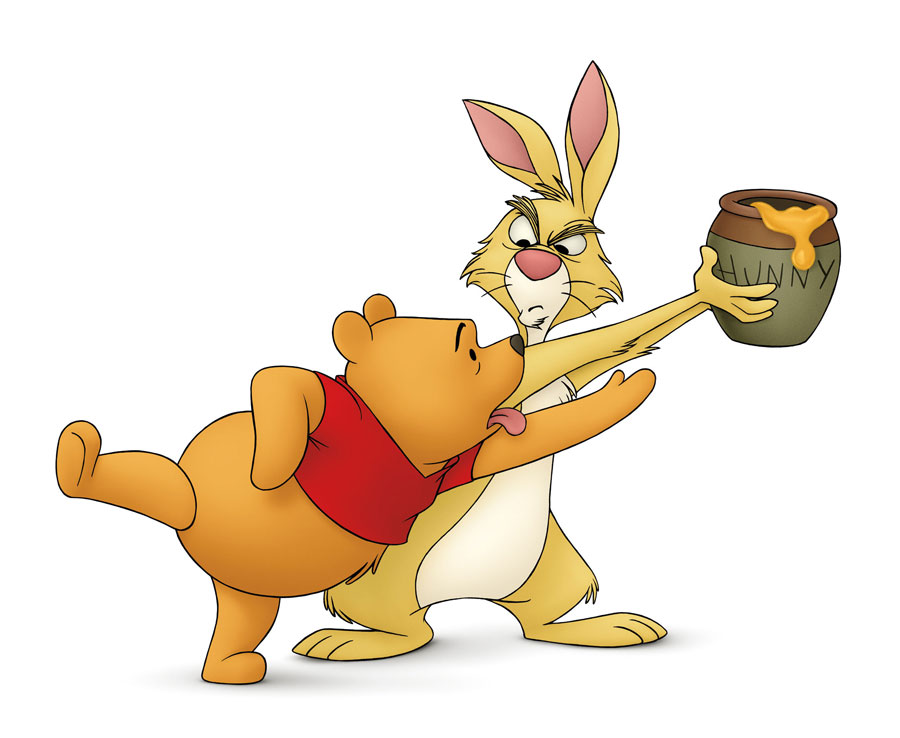"Mr. Aladdin, Sir..."
He's crazy, hyperactive, and hilarious! He's the Genie from Aladdin. He is also the poster child for Post-Modernism. Seriously, I think all the comparisons that I have done already were good, but this one is freaky spot on.
But let's not get ahead of ourselves! First, what makes something Post-Mod? Well Post- Modernism is characterized by fragmentation and non-linear narratives, temporal (earthly) distortion, often for the sake of irony. It is often very ambiguous and, since it views the world as meaningless, it often is very playful and eccentric in nature.
That being said, Genie is the perfect candidate to represent Post-Modernism. One of the main ways that the Genie is able to keep us laughing is due in part to his celebrity impressions. But the question has been asked how a genie in Agrabah in a time period which is never specified but obviously not our own able to reference stars who have yet to gain fame? The answer is simple, Genie's existence is non-linear, meaning that he can jump from past to present to future.
Being a genie, he is able to duplicate himself, manipulate his appearance, and so on. As a result, there is some ambiguity as to what his true form and personality are. His wild and playful antics are a constant, as Genie is always there with a joke or trick. Also, most of these jokes are ironic, aiming to provoke a laugh from the "older" people who may be in the audience.
Genie's non-linear existence, ambiguous appearance, and playfulness all line up with the key characteristics of Post-Modernism.
Lisa Simpson.
Little girl, musician, activist, intellectual, individual. You know and love her, the only sane/intelligent person in a family of lesser intellect. But did you ever think of her a an existentialist?
Of course you didn't, you are a normal person. Anyway, let's start with a brief explanation of existentialism. Simply put, existentialism is a movement which emphasizes individual existence, freedom, and choice.
How does Lisa fit in? Well, first of all she is most definitely an individual. How many elementary schoolers do you know of who have mastered multiple instruments and often read at a college level? Lisa marches to the beat of her own drum, living her life for her. She is also extremely concerned for the world around her, working for justice and equality within her community and aspiring to change to world. Her beliefs that she holds the power to shape her life as well as the lives of others are directly in line with the beliefs of existentialism.
Therefore, Lisa Simpsons is a great example of existentialism!
Howdy Partner!
Sheriff Woody: beloved hero of the Toy Story franchise. But there's more to this cowboy than meets the eye...
What is Naturalism? WELL......it is a theory of writing in which a writer should adopt an objective view toward the material written about, be free of preconceived ideas, and represent with clinical accuracy and frankness the details of life.
So, how does Woody embody Naturalism? Firstly, he views things objectively. For example, when Buzz first arrives to Andy's room, Woody is understandably hesitant; however, he keeps an open mind and attempts to get to know Buzz without preconceived ideas getting in the way. Of course, this does not last long as Woody soon realizes Buzz as a threat to his way of life. In Toy Story 3, Woody tries to think the best of Andy even when things look grim.
Woody is frank when he needs to be, though. He bluntly breaks the news to Buzz that he us, in fact, a toy. He also, tell all the toys plainly when he sees that Andy has out grown them.
Due to his objectivity and clinical accuracy, Sheriff Woody is a perfect example of a Naturalist.
"Eh...What's up Doc?"
Bugs Bunny: crazy rabbit, quick witted opponent, ....hopeless romantic? I argue yes.
You know the drill; we'll start by defining Romanticism.
Simply put it is the philosophical movement and reaction against intellectuality and
rationality. Romanticism produced no one artistic style or
characteristic but greatly impacted the ideals of imagination,
emotion, and the freedom of expression.
So how does everyone's favorite hare-brained bunny fit the Romanticism mold? Well, everything about the way Bugs behaves is a reaction against rationality. Whether he's stay suspended after stepping off a cliff or tying old Elmer's shotgun into a bow, Bugs is challenging the natural or scientific order of the world.
Bugs Bunny is faced with unending numbers of dim-witted although determined foes. In dealing with them, he uses extremely imaginative tactics. Like the works of Romanticism, no two schemes are the same. He's also the cartoon poster child for "freedom of expression". Constantly thinking on his feet, Bugs makes his ideas reality, pulling off incredible disguises and breaking laws of physics.
With his well practiced imagination and anti-establishment tendencies, Bugs Bunny is a perfect example of Romanticism.
"Look for the Bare Necessities..."
Baloo is a mellow bear content to live with whatever life gives. But he's more than that. Baloo's a not-so-secret Trascendentalist.
First, let's establish what Transcendentalism is. This "ism" is defined as a philosophy based upon the doctrine that the principles of reality are to be discovered by the study of the processes of thought, or a philosophy emphasizing the intuitive and spiritual above the empirical. According to Emerson's The Transcendentalist, some of the major characteristics of Transcendentalists include: respect for intuitions, withdrawal from labor and competition, consciousness of the disproportion between a person's faculties and the work provided for them, an appreciation for nature, specifically nature's symbolism, and life in rural settings.
Sounding familiar? It should because these Baloo exhibits all of these transcendental qualities. In fact, he sings a song about them. His entire philosophy on life stems from his belief in trusting one's instincts or intuitions. Baloo never works or exerts himself; instead he feels that "the bare necessities of life will come to you".
Furthermore, Baloo appreciates all that nature supplies him with and views it as his center of reason. In the film, The Jungle Book, Baloo does not want to send Mowgli back to the "man village" even though "logic" and evidence dictate that's where he belongs. Instead, he looks to his instincts and the world around him to develop his own absolute truths.
Therefore, Baloo is an embodiment of Transcendentalism.
Anyone familiar with Disney's Winnie the Pooh films will immediately recognize Rabbit as the stuffy, oh-so-superior, self appointed leader of the Hundred Acre Wood.
While I'm not saying that all Puritans are stuffy and annoying, Puritanism is defined as follows: scrupulous moral rigor, especially hostile to social pleasures and indulgences and/or extreme, often excessive strictness in moral or religious matters, esp. rigid austerity.
Let's break it down. Rabbit is regularly the "leader" of the group. He makes the rules, he decides the proper ways to behave. Just like Rabbit, the leaders of Puritan culture set up the laws and practices of the society. And anyone who differed from these accepted norms was ostracized.
Rabbit shares this Puritan trait. This can be seen by the way he treats Tigger, a character who does not fit the mold created by Rabbit.
One of Rabbit's main criticisms of Tigger is his bouncing. The activity which accomplishes nothing besides providing Tigger with joy, is frivolous and unwelcome by Rabbit. In this way he exemplifies the Puritan hostility toward pleasures and indulgences.
For all of these reasons, Rabbit is a representation of Puritanism.
What is Cartoon-isms?
Great question!
You know the literary movements known as "isms" (i.e. Realism, Transcendentalism, Naturalism). Maybe you learned about them in class but feel unsure about how to recognize one from the other. Or perhaps, you cannot think of any examples of each "ism" outside of traditional literature taught within the classroom.
HAVE NO FEAR!
There are examples of the "isms" all around us! While each "ism" movement is placed within a range of years when the philosophy was most popular, the "isms" transcend time. They are past, present, and future. In fact, many cartoon characters, beloved by all, exemplify the characteristics of a specific "ism" which may be associated with decades long since past.
In this blog, I will give examples of such cartoon favorites and explain the ways in which they embody their perspective "ism".





